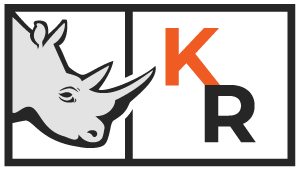Because consumers don’t just demand, but expect, immediate communication, call centers are the relationship hub of business. Acting as the frontline of customer interaction, call centers play a pivotal role in shaping customer perceptions and influencing brand loyalty. Amidst this backdrop, call center reporting is not just valuable, it’s indispensable.
According to McKinsey, companies that applied advanced analytics reduce average handle time by up to 40 percent, increase self-service containment rates by 5 to 20 percent, cut employee costs by up to $5 million, and boost the conversion rate on service-to-sales calls by nearly 50 percent—all while improving customer satisfaction and employee engagement.
Here are 10 ways contact center analytics affect your business:
Enhancing Customer Experience (CX)
Meticulously tracking and analyzing metrics such as wait times, first-call resolution rates, and post-call satisfaction surveys, businesses can paint a detailed picture of the customer’s journey. This granular view identifies bottlenecks, areas of concern, and opportunities for improvement. Armed with this data, call centers can make informed decisions, from refining training programs to adjusting operational strategies. The ultimate goal is a seamless, efficient, and personalized customer experience, and consistent, detailed reporting is the key to achieving this.
Operational Efficiency and Productivity
Providing a clear snapshot of metrics like call durations, first-call resolution rates, and agent performance, call center reports offer invaluable insights into areas of strength and those requiring improvement. This data-driven approach enables managers to streamline processes, allocate resources more effectively, and implement targeted training initiatives. Moreover, by monitoring key performance indicators in real-time, call centers can swiftly address bottlenecks, reduce wait times, and ensure a smoother customer experience, ultimately driving both efficiency and productivity to new heights.
Resource Allocation
By analyzing metrics such as call volumes, peak times, and agent availability, managers can make informed decisions about staffing levels and shift patterns. Furthermore, insights into the types of inquiries received can guide training needs and specialization of roles. This ensures that the right agents, with the appropriate skill sets, are positioned to handle specific customer interactions. Consequently, resources are not only deployed more efficiently but are also aligned in a way that maximizes the call center’s responsiveness and overall service quality.
Cost Management
Call center reporting offers a detailed breakdown of operational expenses, such as agent salaries, training costs, and technology investments, these reports illuminate areas of excessive expenditure. They highlight inefficiencies like prolonged call durations or high call transfer rates, which might escalate operational costs. Additionally, by tracking metrics like first-call resolution rates, centers can identify training or process gaps that, when addressed, reduce repeat calls and related costs. Through these insights, managers can make strategic decisions to optimize operations, ensuring the best use of financial resources while maintaining service quality.
Identifying Trends and Patterns
Call center reporting aggregates and analyzes data over time, managers can discern consistent behaviors or anomalies, such as spikes in call volumes during specific hours or recurrent issues raised by customers. Recognizing these trends early allows centers to anticipate needs, adjust strategies, or even forecast potential challenges. Additionally, tracking patterns in customer feedback or satisfaction scores can offer insights into evolving customer preferences or emerging market shifts. Armed with this knowledge, call centers can proactively adapt, ensuring they remain relevant and responsive in a dynamic environment.
Performance Benchmarks
These reports provide a quantifiable snapshot of key metrics, from average call durations to first-call resolution rates. By comparing these metrics against industry standards or historical data, managers can gauge their center’s performance relative to peers or past results. Such benchmarks serve as a standard of excellence, illuminating areas where the team excels and where improvements are necessary. With this clarity, call centers can set clear, data-driven targets for their teams, fostering a culture of continuous improvement and driving the pursuit of operational excellence.
Feedback Loop for Continuous Improvement
By regularly analyzing metrics and insights from call center reports, managers can identify strengths and pinpoint areas needing enhancement. This feedback loop ensures that any deviations from desired outcomes are promptly addressed. Additionally, insights from customer interactions can reveal preferences, pain points, or evolving needs. By acting on this feedback, call centers can iterate on their processes, training modules, or even technology tools, ensuring that they constantly evolve, adapt, and refine their operations to deliver the best possible service.
Strengthening Training and Development
Through consistent data analysis, managers can identify common areas where agents might struggle, be it in handling specific issues or using certain tools. This analytics-driven approach allows for targeted training, addressing precise pain points and knowledge gaps. Additionally, by monitoring post-training performance metrics, the efficacy of the training programs can be assessed and fine-tuned. Thus, reporting not only aids in diagnosing areas of improvement but also in crafting effective training modules, ensuring agents are well-equipped to handle evolving customer needs.
Mitigating Risks
Constantly monitoring key metrics, potential issues can be flagged before they escalate into larger problems. Whether it’s identifying patterns of security breaches, compliance deviations, or customer dissatisfaction, timely reports empower decision-makers to take proactive measures. Moreover, by studying historical data, centers can forecast potential threats, ensuring preparedness. Consistent monitoring also aids in regulatory compliance, ensuring that protocols align with evolving industry standards. Thus, through informed insights, reporting acts as an early warning system, enabling call centers to navigate challenges effectively and maintain a reputation of reliability.
Strategic Decision Making
By offering a clear snapshot of current operations, key performance metrics, and customer interactions, call center reports provide actionable insights for leaders. These insights guide decisions on workforce allocation, technological investments, and process improvements. Additionally, trend analysis from historical data can highlight emerging patterns, enabling managers to anticipate future challenges or opportunities. In essence, reporting transforms raw data into a roadmap, ensuring that every strategic move is grounded in evidence, aligned with objectives, and tailored to deliver maximum impact in the ever-evolving landscape of customer service.
Call center reporting isn’t just about measuring metrics or achieving numbers. It’s about understanding the pulse of customer interactions, gauging the effectiveness of responses, and continuously improving to meet and exceed customer expectations. In a business landscape where customer loyalty is hard-won but easily lost, Knowledge Rhino arms call centers with the effective reporting tools that provide a distinct advantage. Knowledge Rhino reporting solutions equip leaders to handle the call center challenges of today and anticipate and shape the customer interactions of tomorrow. Contact us to learn how optimized reporting can change your business for the better.


